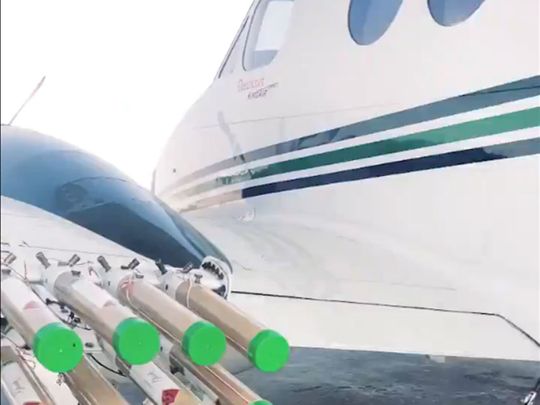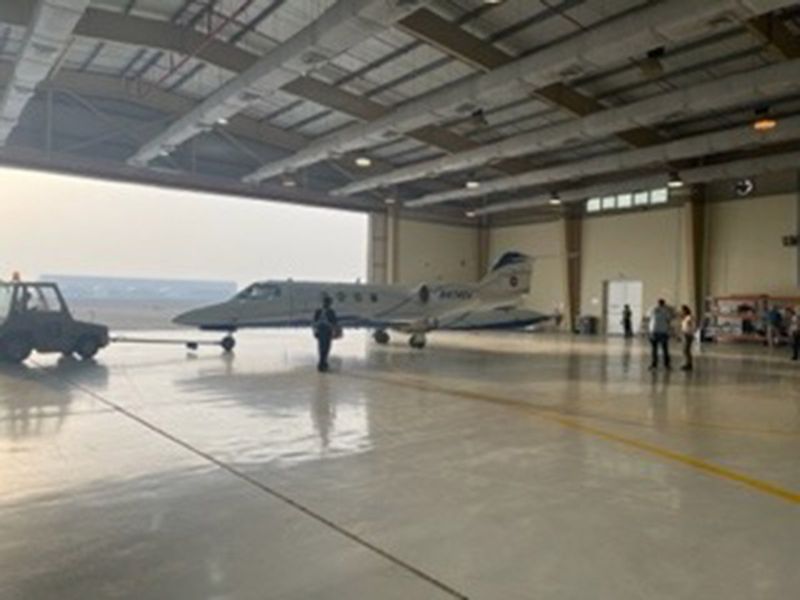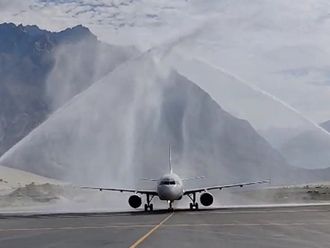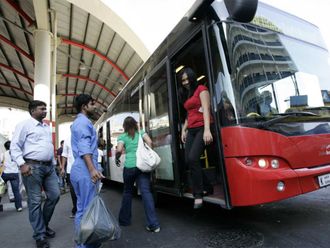
Abu Dhabi: The National Centre of Meteorology’s (NCM), has concluded the field campaign titled ‘Cloud-Aerosol-Electrical Interactions for Rainfall Enhancement Experiment (CLOUDIX)’ through the UAE Research Programme for Rain Enhancement Science (UAEREP) in collaboration with Stratton Park Engineering Company (SPEC), a US-based company specialising in cloud physics research and instrumentation.
The month-long campaign encompassed a series of meticulously coordinated flight missions across the UAE airspace. The research was conducted using NCM’s King Air cloud seeding aircraft and an instrumented research Learjet aircraft operated by SPEC.
Coordinated flights
During the campaign, SPEC’s research aircraft gathered essential data on cloud microphysical properties and electrical characteristics at varying altitudes within a target convective cloud. Subsequently, the NCM aircraft performed cloud seeding using three distinct approaches: Nanomaterial Seeding, Large Salt Particle Seeding, and Conventional Hygroscopic Flares.

Dr Abdulla Al Mandous, President of the World Meteorological Organisation (WMO) and Director-General of NCM, said: “The CLOUDIX research campaign aligns with the UAE’s relentless efforts to find viable solutions for the pressing global water security challenges. Through such innovative campaigns, NCM remains committed to harnessing the latest technology advancements to build new capacities in meteorology and weather modification to mitigate the repercussion of climate change on water-stressed regions worldwide in close collaboration with our prestigious international research partners.”
Dr Al Mandous added: “I would like to express my sincere gratitude to all the participants in this campaign, from the NCM team and SPEC, for their hard work and dedication. We are committed to continuing research in this area, and we believe that this work has the potential to make a significant contribution to water security in our region.”
‘Significant challenge’
Dr Paul Lawson, Senior Research Scientist at SPEC, said: “Due to the highly unpredictable and continuously changing locations of summertime convective cloud formation, conducting well-coordinated flights between the two aircraft presented a significant challenge to the research team. However, through meticulous planning and coordination between the aircraft, the team successfully conducted multiple cloud penetrations and gathered in-situ measurements of cloud and rain particles. The campaign offers invaluable data to enhance our understanding of convective cloud dynamics and develop more efficient rain enhancement strategies for arid and semi-arid regions.”
As various instruments were used during the campaign, the team is currently consolidating data from diverse sources to ensure consistency in the results. In doing so, they aim to investigate potential variations in aerosol sizes based on the charging state. These ongoing and upcoming analyses are planned for completion in the upcoming year.
Maximising rain enhancement
Alya Al Mazrouei, Director of the UAE Research Programme for Rain Enhancement Science (UAEREP), said: “CLOUDIX has marked a significant milestone in UAEREP’s efforts to deepen our understanding of cloud seeding’s influence on rainfall enhancement and, consequently, advance cloud seeding research for the benefit of communities at risk of water scarcity. In carrying out such research endeavours, we aim to accelerate the development of more practical solutions and maximise their impact on our cloud seeding operations.”
Each morning, the aircraft crews reviewed weather information, including atmospheric sounding data in Abu Dhabi, real-time airport weather information in Al Ain, and NCM weather forecasts. These insights guided flight plans, adjusting flight locations and altitudes as necessary to ensure measurements within active cloud regions. The crews communicated using an air-to-air VHF frequency while also monitoring UAE Air Traffic Control (ATC) frequency.
Onboard instruments aboard the Learjet measured meteorological and cloud variables, including the number and size distributions of cloud particles such as droplets, raindrops, and ice crystals, along with detailed imagery. These data revealed a diverse range of cloud particles in terms of sizes and shapes coexisting within the cloud, providing valuable information currently under analysis by the scientists at SPEC.
The data obtained from CLOUDIX are currently being analyzed in greater detail by the scientists at SPEC. Of particular interest is the comparison between the cloud microphysical properties observed during the 2019 campaign when in-situ measurements of unseeded natural clouds were taken and the recent 2023 CLOUDIX mission. This comparison aims to identify the impacts of seeding on cloud microphysics while filtering out other influencing factors such as large-scale dynamics and atmospheric conditions.








